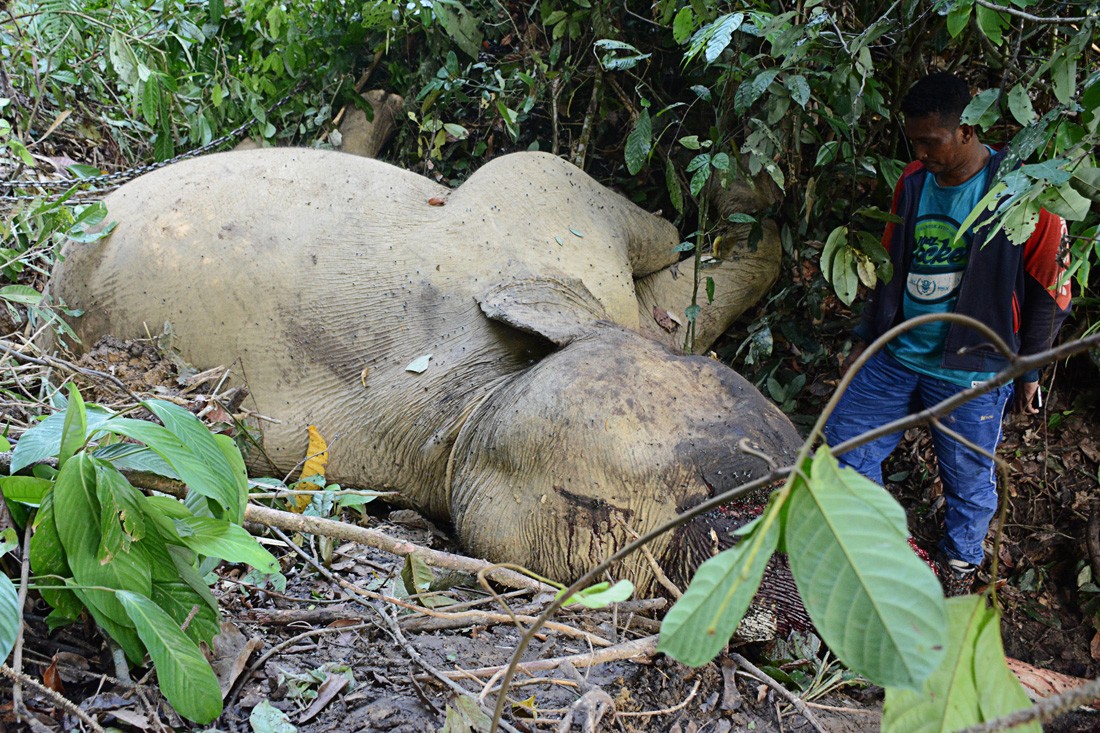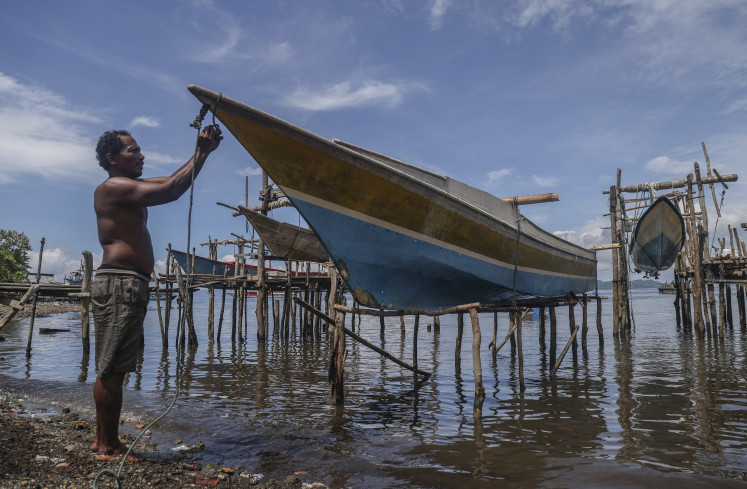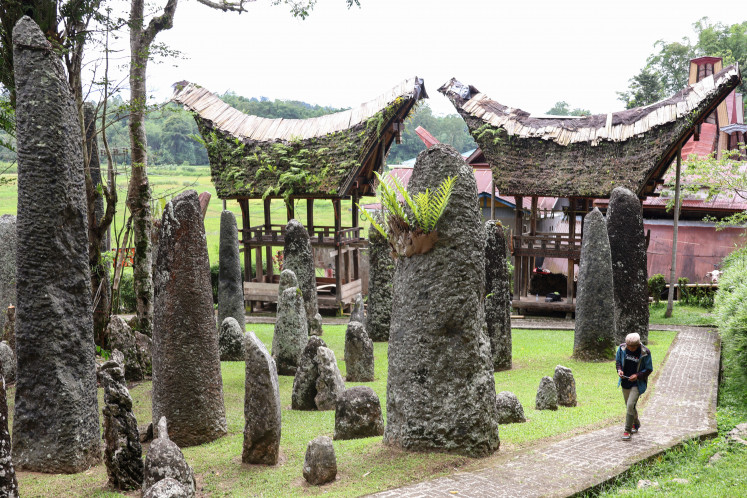Popular Reads
Top Results
Can't find what you're looking for?
View all search resultsPopular Reads
Top Results
Can't find what you're looking for?
View all search resultsWhat Spielberg got wrong about wildlife
Steven Spielberg scored one of his biggest hits with the blockbuster movie Jaws in 1975.
Change text size
Gift Premium Articles
to Anyone
B
unta was brave and rebellious. The five-year-old loved to show who’s-the-boss among the inhabitants of the Conservation Response Unit — a sanctuary for tamed wildlife in eastern Aceh. For a male Sumatran elephant he was considered small. Nonetheless, when the locals asked for help to get rid of the elephants that frequently roamed in their vegetable fields, it was Bunta who was sent to the rescue.
He was a rock star, said one keeper. But the rock star was found dead this June. Poachers are thought to have butchered him after using a lure of mango tainted with poison. His right tusk was savagely slashed off using a machete. So severe was the process that the tusk was broken and a 20 centimeter remnant was horrifyingly left above Bunta’s mouth.
It is a dreadful time for wildlife in Southeast Asia. In the latest records of the International Union for Conservation of Nature (IUCN), 227 animals are included on the critically endangered list.
Among these are several species of pangolin (10,000 individuals poached each year), the Siamese crocodile (100-300 left in Vietnam and Cambodia, only 30 in Indonesia) and the Sumatran rhino (recently declared extinct in the wild in Malaysia while less than 100 are left in Indonesia).
Also included are the Sumatran tiger (with only 300-600 in the wild) and of course Bunta’s clan of Sumatran elephants, who number just 1,000-1,720 individuals, practically half the population recorded a decade ago.
Once known to be dominated by pristine forests, Sumatra and Borneo are two of the last frontiers of the world’s tropical rain forests. The islands have now been changed into landscapes of unending oil palm plantations, illegal logging, mining activities and human settlements.
As their natural habitat dwindles, elephants, tigers and rhinos often stray into nearby villages, crop fields or plantations and thus risk triggering conflicts with locals. In many instances, the wildlife is killed, as people fear for their safety and livestock.
The media has kept a close watch — breaking stories and even going on wildlife investigations. But when conflict arises between animals and humans, the journalist-wildlife relationship grows complicated.
What usually happened, as a conservationist specializing in large mammals in Sumatra described, was that the media blamed the animal, by portraying them as a nefarious menace causing havoc and fatalities.
Headlines such as “Tiger mauls villager” or “Deranged elephants destroy paddy field” are easy to digest and literally invite clicks, albeit stigmatizing wildlife as the culprits instead of victims robbed of their inherited natural homes.
The problem of habitat loss has been made worse by poaching. Sumatran elephant tusks are legendary for their color, density and size, while Sumatran tigers are hunted for practically everything from their skin, to their claws and whiskers.
Activists link the killing of these roaming animals to poaching as when an animal is killed, there is always a black market for their skin, claws, whiskers, tusks and everything in between.
Giving animals bad press can thus give license to poachers to hunt for more wildlife. But that is not all. The real harm of such media portrayals is the risk it poses to conservation itself.
When animals are perceived as savage, not only will normal people feel less guilt about eliminating them every time a conflict arises, but the act of killing will be seen as necessary — as letting them go free would be seen as placing human life at risk. As if to make this point more pronounced, several Aceh news outlets ran headlines over the course of several days only months before Bunta was killed that literally read “Elephants rampage through villager’s crops”.
Over the decades, the media has played a major part in efforts to protect the natural environment in South East Asia. Nonetheless, more balance and clarity in wildlife reporting is necessary to build public support for conservation campaigns. Journalists, for better or worse, wield the power to change public perception.
Shark specialists know just how damaging bad perceptions can be.
A campaign to protect sharks worldwide was not started until the late 1990’s, after the animal’s population had decreased rapidly because of the growing demand for shark fin — mostly to cater to the burgeoning Asian taste.
Much earlier, Steven Spielberg scored one of his biggest hits with the blockbuster movie Jaws in 1975. The classic horror film about a giant killer shark lurking at sea, Jaws carried a strong antishark message: the monstrous fish is a predator of humans and therefore deserves to be eliminated.
A community officer and campaigner for shark protection in Aceh told a fascinating story about how people had become attached to that message. He commonly has his work in shark conservation questioned and criticized. “What’s the point”, his critics say, “they’ll kill you if you don’t kill them”.
Except of course, for the fact that shark attacks are extremely rare in Aceh and throughout Indonesia. Nonetheless, shark attacks are a popular media sell, even if the attacks occur off the coasts of Australia, several thousand miles from Aceh.
Far less focus is given to the staggering amount of shark hunting that takes place. Shark fin, once the most-prized reward from shark fishing, is now overlooked for shark meat and oil (squalene) — at least in some parts of Indonesia. The meat is highly valued as a main ingredient of many local processed fish-based foods.
According to one estimate, 10 million sharks are killed every year to satisfy both local and global demands. The estimate fits the often-cited list that ranks Indonesia as one of the top three shark purveyors worldwide.
As Norwegian writer and conservationist Morten Stroksnes observed in his book published last year, the idea of shark savagery is immensely misguided: they probably kill 20 people a year while humans consume 72 million of them. Still, it is the shark that is thought of as the killer. What a shame. If only Steven Spielberg knew.
***
The writer works for CNN Indonesia.











